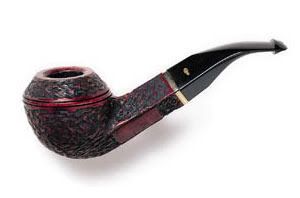
changing colours
changing colours
I am new here so I guess this is a good place to get my feet wet. I am new to this hobby of pipemaking, I am approaching retirement and I'm looking for something to keep me busy. For my first project I thought I would change the colour of a Peterson bent bulldog I have to black from it's existing reddish brown finish. I'm guessing I'll have to strip the old colour first and then apply a new stain. I'm all ears fellas, let me have it. 


- SimeonTurner
- Site Supporter
- Posts: 750
- Joined: Wed Dec 24, 2008 7:46 pm
- Location: Denver, Colorado
- Contact:
Re: changing colours
I suppose you could sand down the smooth areas of the pipe, but because it is rusticated, I think you will find it very difficult to clear every little bit of the red stain. Of course, if you are planning to stain it black, what's left might be able to be covered up.
Perhaps someone else here has an idea about sanding the rusticated areas. *shrug*
Welcome to the forums!
Perhaps someone else here has an idea about sanding the rusticated areas. *shrug*
Welcome to the forums!
"It is noble to be good; it is still nobler to teach others to be good - and less trouble."
Turner Pipes Website:
http://www.turnerpipes.com
Of Briar and Ashes:
http://turnerpipes.wordpress.com
Turner Pipes Website:
http://www.turnerpipes.com
Of Briar and Ashes:
http://turnerpipes.wordpress.com
Re: changing colours
What I would do [disclaimer] is remove the stem, clean the bowl chamber well, and soak the whole stummel in rubbing or denatured alcohol for a few hours to overnight (rinse and repeat if the alcohol leeches out red stain) then take a toothbrush and remove whatever wax, shellac, or gunk is on the bowl and shank and open the briar pores. Let it dry out overnight and coat a dark black stain on top. It should cover the red.
Re: changing colours
I would just stain it black over the existing finish and then put a coat of shellac on it.
Rad
Rad
Re: changing colours
I would render Rad's body for the delicious marrow, and smoke the pipe as is.
I don't find that black goes over previously covered finishes especially well. Certainly it is much "blacker" if you can get it to soak into the wood, and it does so much more effectively before buffing. I think the alcohol soak is worth a run to get rid of shellacs or varnish or waxes etc and "open" the thing up so it might take some finish. But I suspect for REALLY black, you are going to need to do some sanding, maybe 400 grit or so.
I don't find that black goes over previously covered finishes especially well. Certainly it is much "blacker" if you can get it to soak into the wood, and it does so much more effectively before buffing. I think the alcohol soak is worth a run to get rid of shellacs or varnish or waxes etc and "open" the thing up so it might take some finish. But I suspect for REALLY black, you are going to need to do some sanding, maybe 400 grit or so.
ALL YOUR PIPE ARE BELONG TO US!
- ToddJohnson
- Posts: 1366
- Joined: Thu Nov 23, 2006 8:00 pm
- Location: Nashville, TN
- Contact:
Re: changing colours
The stain that's already on it (and the shellac too) is already alcohol soluble. If you use black alcohol based stain, you'll emulsify the shellac while the black soaks into the wood (not that stain ever soaks in very far). Once it dries, put a light coat of shellac over it and you'll have a black pipe.
Todd
Todd
Re: changing colours
What type of stain and shellac would you recommend?ToddJohnson wrote:The stain that's already on it (and the shellac too) is already alcohol soluble. If you use black alcohol based stain, you'll emulsify the shellac while the black soaks into the wood (not that stain ever soaks in very far). Once it dries, put a light coat of shellac over it and you'll have a black pipe.
Todd
- ToddJohnson
- Posts: 1366
- Joined: Thu Nov 23, 2006 8:00 pm
- Location: Nashville, TN
- Contact:
Re: changing colours
Fiebings and Zinsser respectively.Cobra wrote:What type of stain and shellac would you recommend?ToddJohnson wrote:The stain that's already on it (and the shellac too) is already alcohol soluble. If you use black alcohol based stain, you'll emulsify the shellac while the black soaks into the wood (not that stain ever soaks in very far). Once it dries, put a light coat of shellac over it and you'll have a black pipe.
Todd
TJ